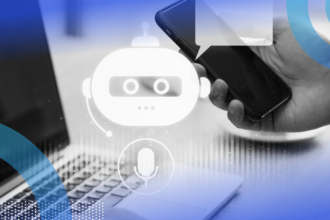In the world of manufacturing, maintaining the highest standards of quality is a critical factor in ensuring customer satisfaction, reducing costs, and maintaining a competitive edge. As industries continue to automate their operations and integrate smart technologies, AI and machine learning have emerged as powerful tools that are transforming how companies approach defect detection and quality control.
AI-driven technologies, especially machine vision systems, offer groundbreaking solutions for automating defect detection processes. By incorporating AI-powered object detection, surface defect detection, and object counting, these systems are reshaping quality assurance and enabling manufacturers to achieve higher levels of efficiency and precision.
In this article, we explore how AI and machine learning are revolutionizing defect detection in quality control, with a focus on their integration with machine vision systems.
The Role of AI in Modern Manufacturing
AI’s integration into manufacturing processes has resulted in significant improvements in productivity, accuracy, and overall quality. By applying machine learning algorithms to production lines, AI systems can identify patterns and detect anomalies that may otherwise go unnoticed by human inspectors or traditional systems.
This capability is particularly useful in defect detection, where accuracy is paramount. Traditional inspection methods, often reliant on manual inspection, can be slow, prone to error, and costly. Machine vision systems, enhanced by AI and machine learning, offer an alternative that is faster, more accurate, and scalable for high-volume manufacturing environments.
Machine Vision Systems: The Foundation of AI-Driven Defect Detection
At the heart of AI-driven quality control lies the machine vision system. These systems use cameras, sensors, and image-processing algorithms to capture detailed visual data from products as they move along the production line. This data is then analyzed in real-time by AI algorithms to identify any defects or inconsistencies.
Machine vision systems equipped with AI can not only detect defects but also classify them based on severity and type. This enables manufacturers to differentiate between cosmetic defects and those that affect functionality, streamlining the decision-making process regarding product rework or rejection.
Additionally, these systems can be integrated with other smart technologies to create a fully automated inspection and quality control workflow. From identifying missing parts during object detection to inspecting surfaces for imperfections, surface defect detection using machine vision ensures that products meet stringent quality standards before they reach consumers.
AI-Powered Object Detection: Precision at High Speeds
Object detection is a crucial function of machine vision systems in quality control, enabling manufacturers to locate and identify parts, components, or products as they move through production. Traditional object detection systems rely on predefined templates or basic rules, which may be limited in their ability to detect complex objects or account for variations in shape, size, or orientation.
However, with AI and machine learning, object detection becomes more sophisticated. AI-powered systems can learn from vast datasets, allowing them to recognize objects in diverse conditions. Whether it’s identifying small electronic components on a circuit board or counting individual products on an assembly line, AI-driven object detection offers unparalleled precision and flexibility.
For instance, in industries like electronics manufacturing, AI-powered object detection systems can inspect complex circuit boards for missing or misaligned components. Similarly, in the automotive industry, these systems can ensure that parts are correctly assembled and positioned on vehicle frames. This precision is essential in preventing costly production delays or safety issues.
Surface Defect Detection: Ensuring Visual and Structural Integrity
Surface defects can have a significant impact on a product’s performance, durability, and appearance. Even minor flaws, such as scratches, dents, or discolorations, can render a product unfit for sale, leading to rework, waste, or recalls. AI-driven surface defect detection systems play a critical role in ensuring that such defects are identified and addressed before products reach the end consumer.
By using high-resolution cameras and machine learning algorithms, surface defect detection systems can inspect the exterior of products in real-time, detecting any inconsistencies or anomalies in texture, color, or shape. These systems are capable of identifying even the smallest imperfections, such as hairline cracks or microscopic abrasions, which would be nearly impossible for the human eye to detect consistently.
In industries like aerospace, where surface integrity is critical to safety and performance, AI-powered surface defect detection is invaluable. The same applies to high-end consumer goods, where product aesthetics are a significant factor in brand reputation. In both cases, AI ensures that products meet the highest quality standards, reducing the risk of defects and enhancing customer satisfaction.
AI and Object Counting: Optimizing Inventory and Production
Accurate object counting is a fundamental requirement for inventory management, packaging, and overall production efficiency. In many industries, the manual counting of items on production lines is time-consuming, labor-intensive, and prone to human error. AI-powered object counting systems solve this problem by automating the counting process with unmatched speed and accuracy.
AI-driven object counting systems can be used across a wide range of industries, from pharmaceuticals to food and beverage manufacturing. These systems can count individual products, components, or packages as they move along the production line, ensuring that the correct quantities are included in each shipment or assembly.
For example, in the packaging industry, AI-powered object counting systems can verify that the correct number of items is placed in each box, minimizing the risk of overpacking or underpacking. This level of precision not only improves inventory accuracy but also optimizes production workflows, reducing waste and increasing throughput.
The Benefits of AI-Driven Defect Detection Systems
The implementation of AI and machine learning in defect detection systems offers a multitude of benefits for manufacturers, including:
- Improved Accuracy and Precision: AI-driven systems are capable of detecting even the smallest defects with a high degree of accuracy. This reduces the likelihood of defective products reaching consumers and minimizes the need for rework or recalls.
- Faster Inspection: Traditional quality control methods are often time-consuming and require manual intervention. AI-powered systems, on the other hand, can inspect products in real-time, speeding up the inspection process and increasing overall production efficiency.
- Consistency: Unlike human inspectors, who may become fatigued or inconsistent over time, AI systems can operate continuously without compromising on quality. This ensures consistent defect detection across all products, regardless of production volume.
- Cost Savings: By reducing the number of defective products and minimizing waste, AI-driven defect detection systems help manufacturers save on costs associated with poor quality. These systems also lower labor costs by automating tasks that were previously performed by humans.
- Scalability: AI-powered defect detection systems are easily scalable, allowing manufacturers to adapt them to different production lines and processes. This flexibility makes them suitable for industries of all sizes, from small manufacturers to large-scale industrial operations.
Challenges and Future Trends
While the benefits of AI-driven defect detection systems are clear, there are also challenges associated with their implementation. One key challenge is the need for high-quality training data. Machine learning algorithms rely on large datasets to learn and improve their performance. Without sufficient data, these systems may struggle to accurately detect defects or anomalies.
Another challenge is the cost of implementing AI systems, particularly for small and medium-sized enterprises (SMEs). While the long-term benefits of AI adoption are significant, the initial investment in hardware, software, and training can be prohibitive for some companies.
Looking ahead, the future of AI in defect detection is bright. As machine learning algorithms become more advanced and accessible, we can expect to see even greater improvements in accuracy, speed, and flexibility. Edge computing, which enables real-time data processing at the source, is also poised to enhance the capabilities of AI-driven machine vision systems, reducing latency and improving performance.
AI and machine learning are transforming defect detection in quality control, offering manufacturers a powerful tool to enhance efficiency, reduce costs, and improve product quality. By integrating AI with machine vision systems, companies can automate defect detection, object detection, surface defect detection, and object counting with unprecedented precision.
As AI technologies continue to evolve, manufacturers that embrace these innovations will be well-positioned to meet the demands of Industry 4.0 and achieve the highest levels of quality assurance in their production processes

















